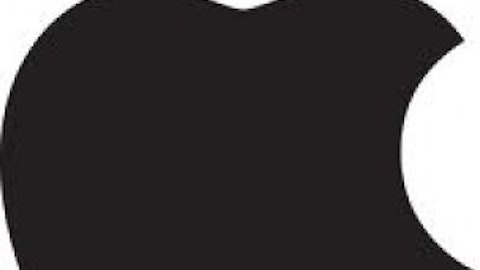Investors and insurers are swooping in on Asia’s insurance industry for acquisitions, encouraged by a low rate of penetration in the region’s emerging markets at a time when European banks, in need of cash, are exiting the sector. Insurance has become a relatively hot sector for M&A activity in Asia, with deals involving ING, HSBC Holdings plc (NYSE:HBC) and others. Southeast Asia’s strong economic growth and very favorable demographics have made insurance a target for financial firms looking to expand as the developed markets all age rapidly. Buoyed by a number of billion-plus dollar deals, the volume of announced M&A deals in Asia rose 24% to $21.85 billion last year, which was also 42% higher than in 2009.
PVI Sun Life Insurance Company Limited (PVI Sun Life), the joint-venture life insurance company formed by PVI Holdings and Sun Life Assurance Company of Canada (Sun Life), a wholly-owned subsidiary of Sun Life Financial Inc. (NYSE:SLF) , has received regulatory approval from the authorities in both Vietnam and Canada. The Ministry of Finance of Vietnam issued the Licence No. 68 GP/KDBH for Life Insurance Operations on January 24, 2013. PVI Sun Life will have a charter capital of VND 1,000 billion (approx. US$48 million).
Per Vietnam’s rules on foreign ownership, PVI owns 51 percent of the company, and Sun Life the remaining 49 per cent. These rules, however, are under strong pressure to change, and financial services and banking are industries where majority foreign ownership is likely to occur first. In general, Vietnam needs a new round of foreign investment, and the current structure holds little to no incentive right now. Deals like this one should be just the beginning, especially as Vietnam’s banking sector is forced to consolidate to strengthen, once the changes to the Constitution move through the political process in 2013.
PVI Sun Life will benefit from the excellent reputation and brand of PVI in Vietnam, as well as its strong customer base, extensive infrastructure and quality people. Sun Life brings with it 150 years of experience in the life insurance space, including experience in the Asian market that dates back to 1892. Vietnam’s life insurance market is poised for rapid growth of the young middle class that’s emerging. While the country has been one of the fastest growing economies in Asia in recent years, only five percent of the population currently has life insurance coverage.
Indonesia
State-controlled PT Bank Negara Indonesia has hired French bank BNP Paribas, as well as state-owned PT Bahana Usaha Indonesia and PT Danareksa, to advise it on the sale of a stake in PT BNI Life Insurance and the exclusive right to sell insurance products across its network, said people with knowledge of the bidding process. The deal comes as big insurers from Japan’s Mitsui Sumitomo Insurance Co. to Canada’s Sun Life bulk up in the region, racking up $21 billion in deals last year, rising from $16 billion in 2011. They have been paying up front for the right to sell insurance products in volatile economies, for increasingly long periods. The attraction is clear: Indonesia’s economy, the largest in Southeast Asia, is growing at a rate of about 6% a year, and the growth rate in life insurance premiums closely correlates to economic growth.
Growth is sluggish or even negative in many industrialized countries as the demographics are all wrong and the markets are saturated. Analysts at reinsurer Swiss Re expect Indonesian life-insurance premiums to grow by 8.3% this year versus 5.6% across Asia and 1.6% in the U.S. Indonesia is also home to the world’s fourth-largest population, and only a tiny fraction of the people own life insurance. Like Vietnam, this is a market with nearly explosive growth potential in this industry. Premiums were equal to just 1.1% of gross domestic product in 2011, versus 3.6% in the U.S. and 8.8% in Japan, according to Swiss Re estimates.
Banks Health Is the Key
One of the most practical ways for an insurer to grow in Asia is to enter into a distribution agreement with a bank, which enables insurers to sell their products via the bank’s branches. However, the popularity of these agreements, known as bancassurance deals, means it is getting more expensive for insurers to forge an alliance with lenders in Asia. “There is increasing emphasis on bank-based distribution of insurance products across Asia,” said Donald Lacey, who heads Citigroup Inc. (NYSE:C)’s insurance investment-banking practice in Asia. That has led to a “significantly elevated level of competition among insurance companies for deals with banks.”
Indonesia’s major banks have significant exposure in the Market Vectors Indonesia Index (NYSEARCA:IDX). The ETF has moved back up to a strong resistance zone on a long term chart. Given the current lift that global money printing is giving to equities around the world, I expect to see Indonesia’s equities to continue performing well, especially as Indonesian banks recently passed Fitch’s latest round of stress tests and were sitting on more than 14% Tier I capital asset ratios in the latter half of 2012. The same cannot be said for Vietnam’s banks, and with the VN Index staring at long-term resistance, we are likely looking at a replay of last year’s pullback from the $490 area. There are still too many problems in Vietnam to recommend a broad ETF like the Market Vectors Vietnam (NYSEARCA:VNM). To invest there will require due diligence on individual companies.
The article Southeast Asia Insurance Continues to Attract Growth Capital originally appeared on Fool.com and is written by Peter Pham.
Copyright © 1995 – 2013 The Motley Fool, LLC. All rights reserved. The Motley Fool has a disclosure policy.






